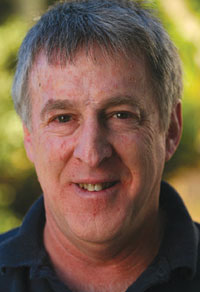 Mike Simmons, founding president of Astronomers Without Borders (AWB), travels extensively to observe and study celestial events. He promotes astronomy by networking amateur astronomy groups throughout the world and is associated with the Mount Wilson Observatory in California. Nepali Times spoke with Simmons about his experience in astronomy and how Nepal could benefit from astronomy education.
Mike Simmons, founding president of Astronomers Without Borders (AWB), travels extensively to observe and study celestial events. He promotes astronomy by networking amateur astronomy groups throughout the world and is associated with the Mount Wilson Observatory in California. Nepali Times spoke with Simmons about his experience in astronomy and how Nepal could benefit from astronomy education.
Nepali Times: What inspired you to start stargazing?
Mike Simmons: I was interested in astronomy at such an early age that I can't remember when I first became interested or how. When I was old enough I bought books, used binoculars, and joined an astronomy club to learn more. I've stayed involved in astronomy through my entire life while working and raising a family.
What has been your most exciting moment in stargazing?
It's such an exciting field and pursuit, how can someone choose one exciting moment? Whether using a small telescope or a huge one, it's the idea that you're seeing something so far away and so different than our own familiar world that makes it interesting and exciting.
What inspired you to establish AWB?
AWB has been established to connect people with an interest in astronomy and other fields all over the world. Many organisations have joined us in this effort and I expect to have over a thousand organisations affiliated with us eventually.
How could Nepali stargazers participate in AWB?
As we build the AWB network of affiliate organisations there are more and more groups in other countries to interact with. It will be some time before we grow to the point where we can accomplish all our goals, but eventually there will be forums and interactive events where Nepali stargazers can talk with and maybe observe with their colleagues anywhere in the world.
 What strategy would work for practical astronomy in Nepal?
What strategy would work for practical astronomy in Nepal?
Sending a spacecraft to the Moon is really an engineering project, more than astronomy or another science. It's very difficult and requires experienced and educated engineers and scientists. Nepali engineers and scientists will have to get the best education possible in order to prepare for such a huge endeavour.
How could Nepali and American astronomers collaborate?
Nepali astronomers can certainly come to the US to study and to participate in research programs here. There are ways for people to apply but for such top-flight programs the applicants have to be among the best to qualify.
How far is astrology true from the scientific perspective?
The positions of the stars and planets have nothing to do with what happens to us on Earth. We need to move forward using our new knowledge to make decisions about what we should do and what we can and cannot do and forget the old false beliefs that we have learned. Only then can we move forward and control our own destinies rather than taking the path of the past.
June Highlights:
. Make plans to celebrate for the longest day of the year. The Sun is at solstice on 21 June, indicating the start of summer.
. After 2 June, when Mercury reached it greatest eastern elongation and its best position to be viewed, it started moving closer to the setting Sun and will go through inferior conjunction on the 28 June to become a morning object.
. Venus moved from Gemini to Cancer at the start of June and this fantastic "evening star" and will be close to Saturn by the end of the month.
. Mars moves from Pisces to Aries during June, rising three or four hours before the Sun.
. Saturn will be seen parked in western Leo throughout the month. On 30 June, Saturn and Venus will be very close to each other, so make a point to try to see them in the western horizon an hour after sunset.


